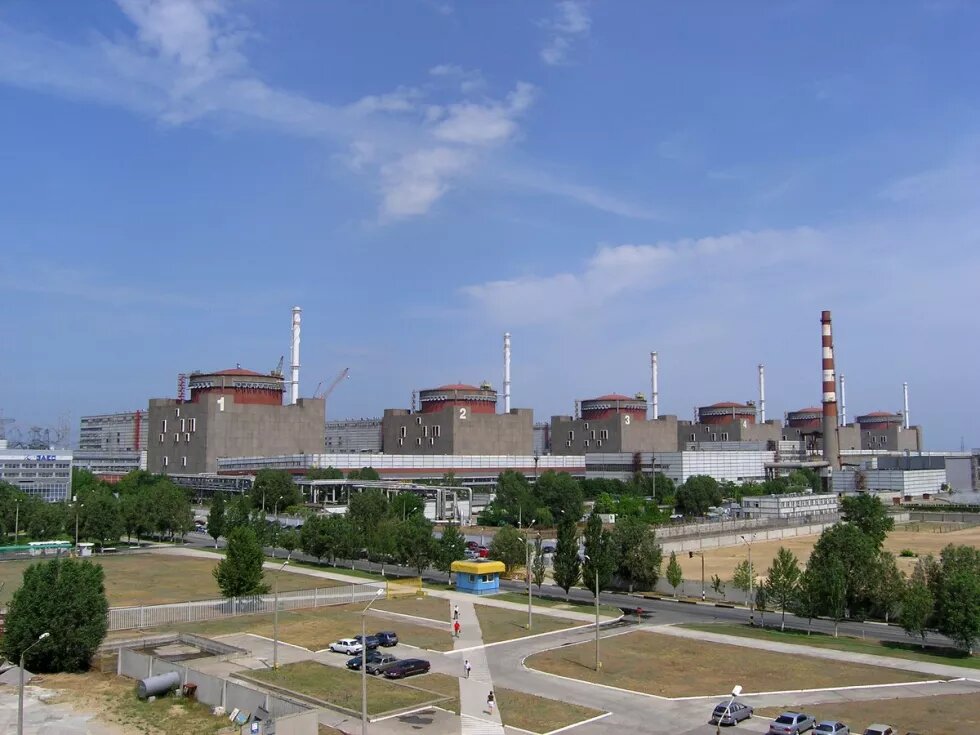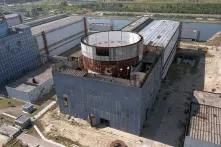
The development of the nuclear sector in Ukraine is usually not much discussed at the political level neither within the country nor with regard to the relations with the European Union, though the possible consequences of the course of development in the sector are substantial. Many are afraid to touch this topic as it is even more sensitive than coal phase-out. Nevertheless, prospects of the Ukrainian nuclear industry were discussed by panelists and participants of the 3rd EU-Ukrainian Virtual Roundtable on Energy Transition that was organized by Heinrich Boell Foundation together with the Ukrainian NGO Ecoaction.
The full video is available here.
The panelists made a round of brief interventions aimed to find answers for these questions: (1) safety issues of Ukrainian NPPs in context of continuous lifetime extension; (2) investment into new nuclear units compared to renewable electricity generation; (3) role of nuclear power in ensuring security of electricity supply both in Ukraine and EU.
The first input was made by Nataliia Rybalka, Deputy Director of Directorate of Development of Nuclear Energy and Nuclear Industry, Ministry of Energy of Ukraine. In absence of a representative of the State Nuclear Operator “Energoatom”, Ms. Rybalka provided an overview of the current state of affairs in the nuclear sector in Ukraine.
“There are 15 nuclear units at 4 NPP sites of overall installed capacity 13.385 GW. They ensure from 52% to 55% average in electricity generation in Ukraine. The lifetime was prolonged for 10-20 years for 11 units out of 15. There are also nuclear wastes disposal sites, scientific research reactors, uranium enterprises and Chornobyl confinement and Exclusion Zone consisting the nuclear sector of Ukraine.”
The major part of her presentation Nataliia devoted to the legal framework.
“Along with national policy principles established in basic laws and strategic documents, there are Documents under development: Draft of the Concept of the Long-term State Economical Program of Nuclear Energy Development (developed by SE Energoatom); Draft of State Economical Program of Spent Nuclear Fuel Management for Ukrainian NPPs up to 2025; Planning of periodical Decommissioning Concept review and update.”
In her speech, the representative of the Ministry was stressing on the necessity of keeping the share of nuclear in energy mix in Ukraine, as in her opinion renewables cannot constitute an alternative. Further, she elaborated on the implementation of the Consolidated Safety Upgrades Program and on compliance of the safety level of Ukrainian NPPs with international standards and recommendations. In contrast, Ms. Oleksandra Zaika, energy policy expert of Ukrainian environmental NGO Ecoaction was not so optimistic and enthusiastic about nuclear industry in Ukraine. She gave alternative assessment:
“We are very worried about the state of nuclear power in Ukraine. Our main concerns are as follows. First of all, it is the artificially lowered price for the nuclear electricity. The tariff for this electricity is the lowest among all other sources, but it does not cover all associated costs and negative externalities, like decommissioning. Secondly, it is spent nuclear fuel and radioactive waste management. There is only one storage site at Zaporizhzhia NPP. Spent fuel from the remaining three NPPs should be stored at Central Storage at Chornobyl, but its construction is continuously delayed. This brings us to the third concern and this is dependency of nuclear industry on Russia. Spent fuel from Ukrainian NPPs is sent for treatment to the Russian Federation for around 200 mln US dollars per year. Also 60% of the nuclear fuel for Ukrainian NPPs is imported from Russia. And the fourth concern is about unrealistic plans of nuclear sector development. In times when world refuses from new nuclear projects because of economic non-feasibility, Energoatom is trying to revive old construction of the 3rd and 4th units at Khmelnitskiy NPP.”
Ukraine relies a lot on European Union and its support. Thus, audience was especially interested to listen to Mr. Massimo Garribba, Deputy Director General at Directorate-General for Energy of European Commission, and his update on how does the EU monitor progress in safety upgrades in Ukrainian reactors. Does the EU follow financial and technical capacity of Ukraine for decommissioning of lifetime expired reactors?
“Ukraine is a strategic partner for EU. We work gradually to align Ukrainian energy policy to EU norms and standards under EU-Ukraine Association Agreement where there is a large Annex XVII on energy. We acknowledge recent reforms and structural changes in the energy sector. We should encourage Government of Ukraine to keep moving in this direction and to ensure functioning of fully competitive electricity and gas markets as a prerequisite to achieve the right conditions. … Ukraine has agreed to align its legislation to the European one on nuclear safety, spent fuel and wastes management, radiation protection. The EU supports this ambition by a number of bilateral programs. One of them is the construction of the shelter in Chornobyl paid through EBRD in amount of 130 mln euro. Another one is combined 600 mln euro loan between the Comission and EBRD to support implementation of the Consolidated Safety Upgrades Program prepared by Energoatom. And there are some difficulties in targeting this money because of slowness of aligning certain parts of Ukrainian safety legislation with EU one.”
Acknowledging in general progress in Ukraine in the nuclear sector, full participation in the post-Fukushima stress test, Mr. Garribba also mentioned aging of the entire nuclear fleet in Ukraine with 33 years old average. In this regard, it was quite significant to understand how other countries in the world deal with old nuclear units and do they build new ones. Mr. Antony Froggatt, senior research fellow at Chatham House, co-author of The World Nuclear Industry Status Reports responded to this demand putting Ukraine in international context in his presentation.
“From mid 80s after Chornobyl we observe slowdown of new nuclear units start-ups all over the world. An overall clear trend. After 2000, in the EU only 3 start-ups took place and lots of closures. Some of them were political decisions like after Fukushima, or industrial decisions when reactors coming to the end of their operating lives like in UK or Sweden. Recently only India, China, South Korea and Russia have reactors being built in more than one site. Another reason of little new units being constructed is that production cost of electricity from nuclear is stable or often growing while levelized cost of electricity production from solar and wind is continuously declining per MW/hour. Ukraine announced desire to have electricity market, and if you have electricity market then the market will choose probably the cheapest cost. For sure, this is not about only generation cost, but about cost of the system, like flexibility. … Anyhow, when a country needs to decarbonize its economy rapidly and cheaply what we are increasingly seeing is that renewables, solar and wind, are the cheapest options. They are cheaper not only then nuclear, but comparing to fossil fuels such as coal and gas as well. That is the choice facing around the world.”
A significant part of discussion dealt with the potential construction of the 3rd and 4th units at Khmelnitskiy NPP as it was recently announced by the President Zelenskiy. According to Energoatom, up to 75% of building works are already completed at unit 3, and up to 28% at unit 4. The expected installed capacity of both units is 2094 MW, and the technical projected lifetime is 50 years. However, no comprehensive examination of the conditions of those structures has been made in the last 10 years. At the same time, a newly created working group examined the site in the last week of September 2020 and based only on observation without comprehensive technical expertise concluded on possibility of 3 and 4 units construction. Participants discussed that it is unlikely that this project will be physically implemented because of continuous growth of costs and talked about possible linkage of recent push to restore construction with vested interests of groups who could desire to keep process only for process itself.
Another hot topic discussed was safety issue. Comprehensive Consolidated Safety Upgrade Program (CCSUP) implementation was postponed. This means that Ukrainian NPPs are not completely safe as some of the safety measures are still not implemented. One of them is retrofitting of back-up diesel engines at Zaporizhzhia NPP and providing them with modern electronic controls. According to the initial CCSUP plan agreed by the nuclear regulator, diesel engines should have been retrofitted, tested and certified as operational by 2017. In accordance with CCSUP implementation report for 2 quarter 2020, as of the end of June, none of the six units at ZNPP has retrofitted its diesel engines.
After this discussion went around what should be the best option for Ukraine: to decommission existing units, construct new ones or extend more lifetime of existing ones. And as there no single answer, what is obvious is that future of the sectors should be discussed and planned now, because it will be too late in 5 or 10 years.
The next online briefing for expert community on development of Ukrainian energy sector is planned for beginning of 2021.
Further readings:
Article "Ukraine's nuclear impasse"
Fact Sheet "Ukraine and EU: Towards a Decarbonisation Partnership"

